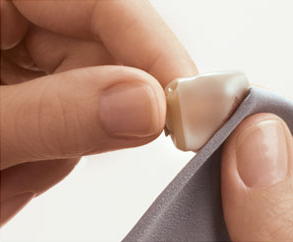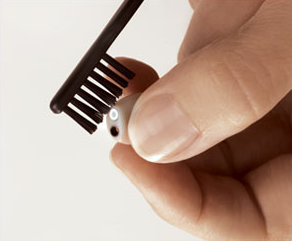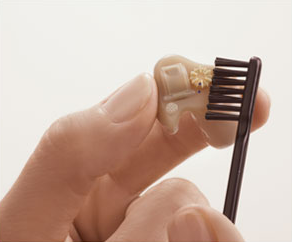Hearing instruments are durable and can withstand normal wear and handling, they are not indestructible. The majority of hearing instrument repairs are due to moisture damage and ear wax build-up. Following a few simple daily steps will extend the life and service of your hearing instruments.
After removing the hearing instrument from the ear at the end of each day, the exterior surface should be gently wiped with a clean, soft, lint-free cloth or moist cleaning wipes designed for hearing instruments. Do not allow water or any liquid to enter any of the openings on the instrument.
Custom in the ear aids: Inspect the tip of the ear canal portion of the hearing instrument for any wax build-up. Using the wax tool supplied with the hearing instrument, carefully remove any wax from around the sound outlet. Be very careful not to push wax into the opening or to insert the tool deeply into the opening. Using the brush end of the tool, brush away the debris while holding the instrument with the sound outlet facing down so the loose wax falls away from the instrument.
Behind-the-Ear aids with open-fit sound tubes and ear buds: Remove the sound tube from the body of the instrument following detailed instructions in the owner’s manual that accompanied the hearing instrument. Use the cleaning rod (included with hearing instrument) to clean the sound tube and ear bud. Lightly “push” the cleaning rod through the sound tube, inserting at the opening where the tube attaches to the body of the instrument and push out through the ear bud. Gently wipe all components with a clean, soft, lint-free cloth or moist cleaning wipes designed for hearing instruments.
Hearing instruments are exposed to moisture in the form of humidity and perspiration while being worn. The daily use of a dehumidifying system or drying kit approved by your hearing healthcare provider is highly recommended. These accessories may be purchased from your hearing healthcare professional. If you have any questions about the care of your instruments, contact your hearing healthcare provider.


